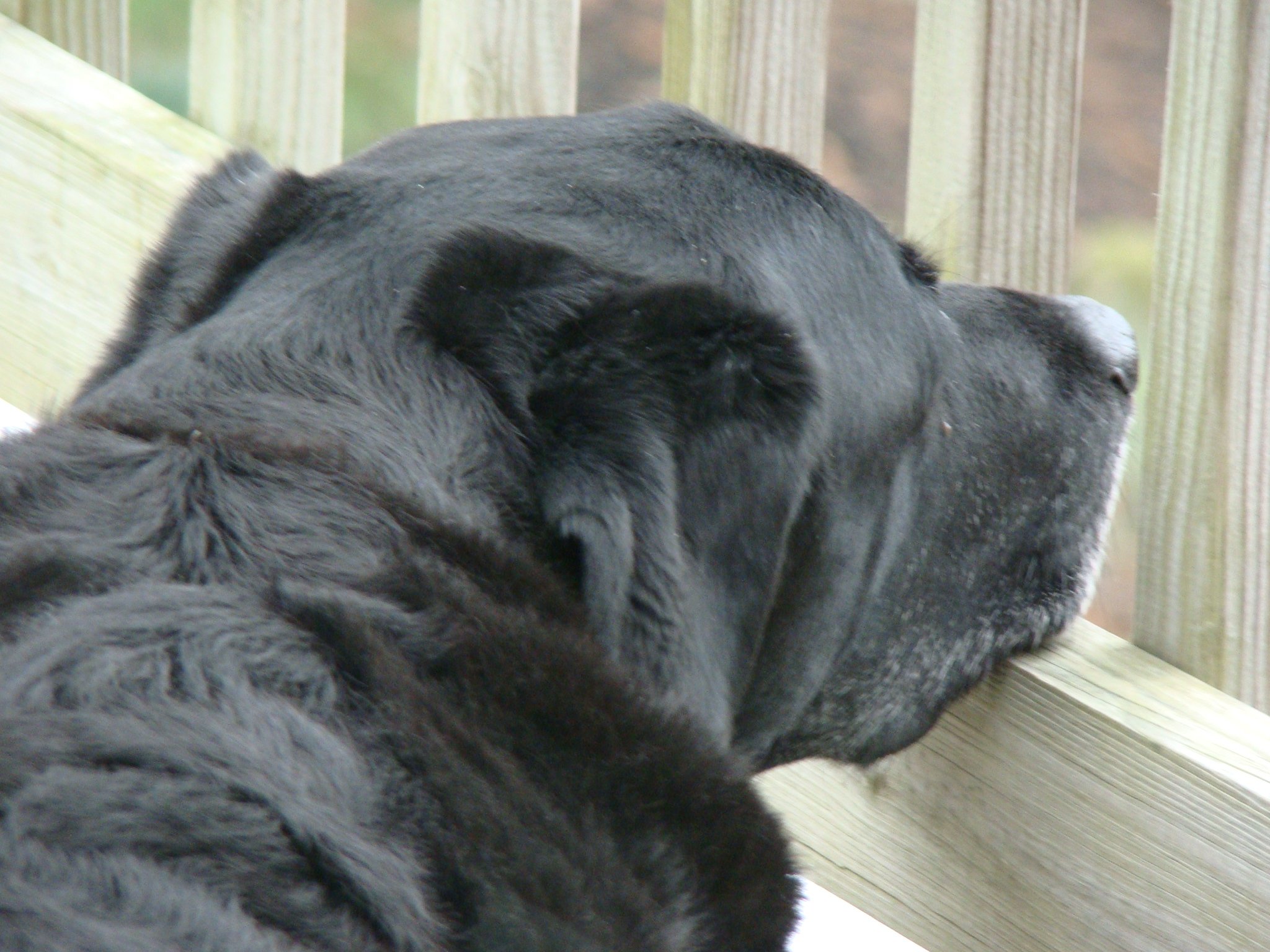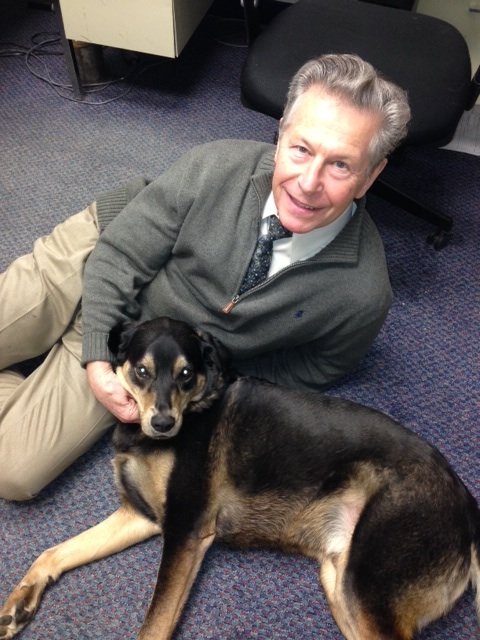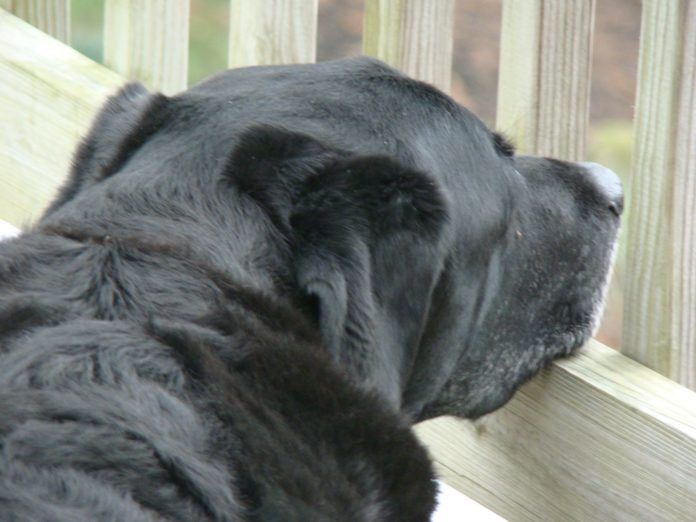News tends to come in cycles, and this past winter was no exception when Brian Williams reported on NBC Nightly News that black dogs are euthanized at a much higher rate than other dogs because they are less likely to be adopted due to their color. It’s not the first time the terrible plight of black dogs hit major media. The thing is, is it true? Are black dogs more likely to languish in shelters than to be taken home by loving families, only to meet an untimely end because no one will bring them into their families?

What can be said with absolute certainty is that the answer is not at all certain. Comments Emily McCobb, DVM, who runs the Shelter Medicine Program at Tufts and is in constant touch with rescue groups trying to adopt out homeless dogs, “every shelter may tell you something different. Certainly black Labs are a very popular breed, so it’s not always true that black dogs are hard to adopt. It may be one of those perception-becomes-reality issues. It’s a hard thing to study conclusively” even though “it’s definitely something you hear anecdotally.”
The Director of our Animal Behavior Clinic, Nicholas Dodman, BVMS, most definitely sees it the same way, noting that there are scientific papers on this subject that reach diametrically opposed conclusions. For instance, a study published in the Journal of Applied Animal Welfare Science in the early 2000s found that for both dog and cat adoptions at California animal shelters, pure black coats steered people away. Then, some years later, the general manager of the Los Angeles Animal Services department reported that data on more than 30,000 dogs showed that slightly more black or mostly black dogs were more likely than other dogs to be adopted. For both of these pieces of data collection, notes Dr. Dodman, “one study, like one swallow, does not a summer make.” In other words, the results of a study are not a fact. They simply add to the accumulation of research that has to be looked at in its totality to begin to draw any inferences.
And the accumulation is at this point something of a sloppy mess, revealing no discernible trend. A 2013 look at dogs’ length of stay in two New York shelters found that the color of the canine coat had no effect on how long it took for a dog to be adopted. A separate piece of data collection at two shelters in the Pacific Northwest led to a similar finding, showing, in fact, that black dogs were adopted more quickly than dogs of other colors. Yet another study, however, found that gold, gray and white coats were significant predictors of successful adoption while black coats were associated with euthanasia. And on and on it goes.
Elements complicating the picture
Part of the problem at some shelters may come down to certain practical issues. For instance, it can prove more difficult to photograph black dogs than lighter-colored animals. It’s harder to capture the sweet expressions in their faces. “Since photographs are so important in adoptions now,” says Dr. McCobb, they can play a key role.
It could also have to do with the fact that there may be a lot of black dogs in a pool of adoptable pets. If you go to a shelter and see a number of black dogs but only one white one or one blue merle with all those crazy colors, that’s going to stand out to you; it’s easy to be drawn to the thing in short supply, especially when you have to make a decision in the face of so many choices.
The fact that black dogs are not portrayed well in the media may also play into it for some people. “Whenever you see a movie like Hound of the Baskervilles,” says Dr. Dodman, “the foreboding, demonic dog is black. Black is Hollywood code for sinister, while white stands for good, pure. So a horrific dog in the theater is never going to be a harlequin great Dane or a white dog.” Some people may also associate black with evil or misfortune,” Dr. Dodman notes.
But as to whether there’s truly something innate in people that makes them instinctively shy away from black pets, it’s not at all clear. Indeed, a study in the journal Society and Animals demonstrated that people rank black poodles as more friendly than white poodles. A second study indicated that black Labs are perceived by most as less dominant and less hostile than most other large breeds, bringing into doubt the idea that black dogs are uniformly viewed in a negative light. Then, too, while black might connote danger and evil for some, for others it brings to mind sleekness, sophistication, hipness. Which would you rather have, a little black dress or a little white one? A black BMW convertible or a white one? A black leather-bound volume or white? In New England, it’s very cool to have a T-shirt from the Black Dog Tavern on Martha’s Vineyard.
Color shouldn’t be the issue, anyway
Color preferences shouldn’t be playing into anyone’s choice of dog at any rate, Dr. Dodman says. “Beauty is only fur deep,” as he puts it. “People should pay more attention to a dog’s temperament when considering adoption than its appearance. Some dogs who perhaps might not look as pretty to you as others might make absolutely wonderful adoptees who are affectionate and non-aggressive. People shouldn’t judge a dog by its cover. Personality is far more important than prettiness.” There are some four million dogs and cats who are put down in shelters each year because they remain unadopted, he adds. That number could come down dramatically if more people looking for pets worked on choosing a pet with a personality that complemented their lifestyle as opposed to their aesthetic sensibility. So many people choose their dog based on appearance alone without taking the time to interact with it outside of its cage, taking it for a walk, cuddling it, seeing how it responds to cues. That’s where the relationship between a person and his dog lives, not in what people see inthe mirror.

Dr. Dodman knows this firsthand. About a year ago, one of his daughters told him about a dog who had been rescued at a shelter. The woman who rescued him devoted all of her time to her job and her boyfriend. The dog was alone all day — and sometimes all night. The woman would often sleep at her boyfriend’s. Eventually, the dog ate something from the garbage pail that caused an obstruction requiring surgery. The woman couldn’t afford the surgery and was going to put the dog down.
“My wife and I will take care of the surgery on the condition that the dog doesn’t come back to you,” Dr. Dodman offered. “We’ll find him a good home.” They did. Theirs.
“The dog was a skeleton when we first got him,” Dr. Dodman relates. “He weighed 48 pounds. Now he’s healthy weight at 70 pounds. He no longer eats out of garbage cans. He’s not starving. And he’s not in a crate 22 hours a day that was only big enough for him when he was a puppy; he had to remain hunched over in there, which gave him a serious wound on his back that healed to a scar. He and our other dog sleep on our bed together. They groom each other. He’s relaxed now, taking treats gently and going up into the woods with our other dog on walks. Life is no longer a constant panic for him.”
And, oh yes. Lest we forget: the Dodmans’ new dog is 80 percent black.





